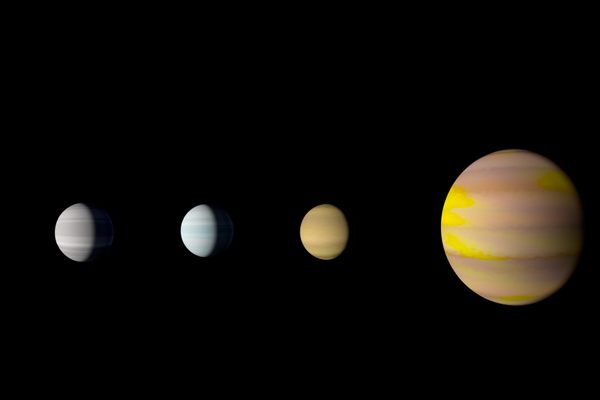Neptune’s New Surprise Storm Is Nearly as Big as Earth
The ice giant’s atmosphere is pretty chaotic.

Just in recent months, we’ve seen that Jupiter’s magnetic field is lumpy, Venus’s atmosphere has giant standing waves, Uranus orbits the sun on its side, and Mars has giant tornados scouring its surface. Our cosmic neighborhood is full of characters, and now it’s Neptune’s turn in the spotlight. Astronomers recently spotted a storm on the planet’s surface that is both in a weird location and nearly the size of Earth.
The wild weather was observed from Hawaii’s W.M. Keck Observatory during a test run at dawn, and surprised scientists. “Normally, this area is really quiet and we only see bright clouds in the mid-latitude bands, so to have such an enormous cloud sitting right at the equator is spectacular,” said Ned Molter, the University of California, Berkeley, researcher who spotted the storm, in a press release. It stretches 5,500 miles across the middle of Neptune, about twice the distance from New York to Los Angeles.
Neptune’s storms don’t quite have the enduring persistence of Jupiter’s famous Great Red Spot. The planet’s Great Dark Spot, in the southern hemisphere, and was captured by Voyager 2’s cameras back in 1989. Winds were clocked at 1,500 miles per hour. By the time the Hubble Space Telescope turned its eye toward the planet in 1994, the storm had dissipated, but another was raging in the northern hemisphere. Yet another dark spot storm turned up in 2016. Who knows what surprises the most-distant planet will throw at us next?




















Follow us on Twitter to get the latest on the world's hidden wonders.
Like us on Facebook to get the latest on the world's hidden wonders.
Follow us on Twitter Like us on Facebook